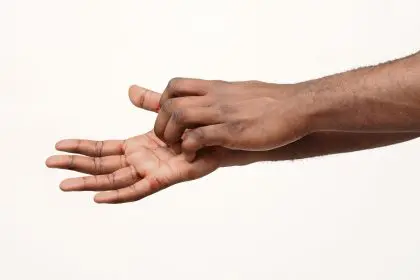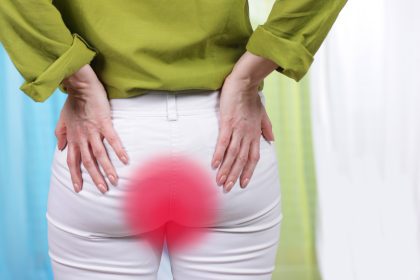Skin tags are small, benign growths that often appear on the neck, armpits, groin and other areas where skin rubs against skin or clothing. While generally harmless, there are several health reasons to consider removing them. This article will delve into the various reasons why removing skin tags can be beneficial for your overall health and well-being.
Understanding skin tags
What are skin tags?
Skin tags, also known as acrochordons, are soft, small, flesh-colored growths that hang off the skin. They are made up of collagen fibers, blood vessels and a layer of skin. These growths are typically harmless and painless, but they can be a cosmetic nuisance for many people.
Causes of skin tags
The exact cause of skin tags is not entirely understood, but they tend to occur in areas where the skin folds and rubs against itself, such as the neck, armpits, groin and under the breasts. Factors that increase the likelihood of developing skin tags include obesity, diabetes and genetic predisposition. Hormonal changes during pregnancy can also lead to the development of skin tags.
Health reasons for removing skin tags
Preventing irritation and discomfort
One of the primary reasons to remove skin tags is to prevent irritation and discomfort. Skin tags can become irritated from friction caused by clothing or jewelry. This constant irritation can lead to redness, swelling and even bleeding. Removing skin tags can alleviate these symptoms and improve your comfort.
Reducing the risk of infection
While skin tags themselves are not harmful, they can become a breeding ground for bacteria if they are frequently irritated or injured. Scratching or cutting a skin tag can introduce bacteria, leading to infection. Infected skin tags can become painful and require medical treatment. Removing skin tags can help reduce the risk of infection and maintain healthy skin.
Improving skin hygiene
Skin tags can interfere with proper skin hygiene, especially if they are located in areas that are difficult to clean. For example, skin tags in the groin or armpit can trap sweat and bacteria, leading to unpleasant odors and skin irritation. Removing skin tags can improve your ability to keep your skin clean and fresh, reducing the risk of skin infections and other hygiene-related issues.
Enhancing appearance and self-esteem
Although skin tags are benign, they can be unsightly and affect a person’s self-esteem. This is particularly true if skin tags are located in visible areas such as the face, neck or hands. Removing skin tags can enhance your appearance and boost your confidence, contributing to a better quality of life.
Preventing accidental injuries
Skin tags can be easily caught on clothing, jewelry or during shaving, leading to accidental injuries. These injuries can cause pain, bleeding and increase the risk of infection. By removing skin tags, you can prevent these accidental injuries and protect your skin from unnecessary harm.
Addressing potential underlying health issues
In some cases, the presence of multiple skin tags can be a sign of underlying health issues, such as insulin resistance or metabolic syndrome. While skin tags themselves are not dangerous, their presence may warrant further medical evaluation to rule out any potential health concerns. Removing skin tags can serve as a reminder to monitor your overall health and address any underlying conditions.
Methods of removing skin tags
At-home remedies
There are several at-home remedies that people use to remove skin tags, including tying off the base with dental floss or applying over-the-counter treatments. However, these methods can be risky and may lead to infection or scarring. It is important to consult with a health care professional before attempting to remove skin tags at home.
Professional medical treatments
The safest and most effective way to remove skin tags is to seek professional medical treatment. Health care providers can use various methods to remove skin tags, including:
- Cryotherapy: Freezing the skin tag with liquid nitrogen causes it to fall off within a few days.
- Excision: Cutting off the skin tag with a sterile surgical blade or scissors.
- Cauterization: Burning off the skin tag using an electric current.
- Ligation: Tying off the base of the skin tag to cut off its blood supply, causing it to fall off.
Choosing the right method for you
The best method for removing skin tags depends on the size, location and number of skin tags, as well as your personal preferences and medical history. Consulting with a health care professional can help determine the most appropriate and effective method for your situation.
Post-removal care
Caring for the treated area
After having a skin tag removed, it is important to care for the treated area to promote healing and prevent infection. Follow your health care provider’s instructions, which may include:
- Keeping the area clean and dry.
- Applying an antibiotic ointment to prevent infection.
- Avoiding strenuous activities that may cause irritation.
- Protecting the area from excessive sun exposure.
Monitoring for complications
While complications from skin tag removal are rare, it is important to monitor the treated area for any signs of infection or other issues. Contact your health care provider if you experience excessive redness, swelling, pain or discharge from the treated area.
Maintaining healthy skin
To prevent the development of new skin tags, it is important to maintain healthy skin by:
- Keeping your skin clean and dry.
- Avoiding excessive friction and irritation.
- Managing underlying health conditions such as obesity and diabetes.
Managing skin tags
Skin tags are common and generally harmless, but there are several health reasons to consider removing them. From preventing irritation and infection to improving appearance and self-esteem, removing skin tags can have a positive impact on your overall health and well-being. By seeking professional medical treatment and following proper post-removal care, you can effectively manage skin tags and maintain healthy skin. If you have skin tags and are considering removal, consult with a health care professional to discuss the best options for your needs.
This story was created using AI technology.















